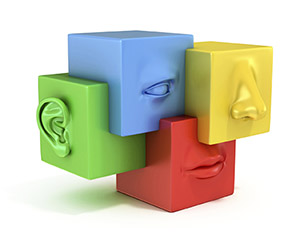“ Gemba is a gold mine,” Teruyuki Maruo
Gemba is a gold mine,” Teruyuki Maruo
If you were led blindfolded onto a working production floor, would you be able to sniff out the problem areas? Could you immediately pinpoint the exact causes of bad quality and late shipments with your eyes closed?
When Teruyuki Maruo launched Honda’s production system, there was great pressure to immediately achieve high performance in supplier quality and deliveries from the company’s new North American supply base. Like today’s push to reshore outsourced suppliers, Honda needed to quickly build up a reliable supply network, hundreds of smaller companies located within 24 hours of its Anna engine and Marysville, Ohio, assembly plants, ramp up its local content percentage, reduce logistics costs and establish consistently lower operating costs.
For many American suppliers, Honda’s high performance requirements were a challenge — historical quality data were not always available, and what data emerged did not tell the whole story.
Instead, the sensei trained his purchasing engineers to use their five senses — as well as their special instincts — to quickly evaluate the potential for high performance at a manufacturing site and to pinpoint supplier problems that would impact quality and delivery.
He wanted his students to walk into any supplier, in any situation, with any problem, and solve it. The goal was to understand in less than 15 minutes, using all five senses, how a plant works, whether machines are running well and where the trouble spots lay.
Maruo wanted Honda purchasing pros to help suppliers maintain the integrity of their processes, but as veterans of his unique training recall, his methods were memorable.
Maruo remembered learning from founder Soichiro Honda, “We noticed that in un-air-conditioned facilities, where it was very hot, we always saw poor-quality parts. In those areas, we replaced those workers with robots. If it was too hot or too cold, or if there was too much noise, or if the environment was not friendly to human productivity — difficult, dangerous or dirty —we would replace human workers with robots.”1
Maruo would pepper his gemba walks with questions aimed at teaching his people how to see, asking, “What do you see? What do you hear?” And if his student answered, “I smell smoke. I hear noises in the equipment,” the great sensei would point out all the things the student had missed.
“He taught me how to look beyond, to look deeper, to focus on what you really see,” recalled Rick Mayo, purchasing engineer, one of Maruo’s star pupils.
By the time Honda had established a robust network of 350 U.S. suppliers, a new batch of workers joined the team, and Maruo moved on to a Honda plant in England. He is now back in Japan, but his teachings remain embedded in the minds of hundreds of Honda and supplier manufacturing professionals.
“Take out scrap, rework and rejects, and what remains is product integrity.”
—Terry Maruo
Lessons in using the five senses from the great sensei
Hearing. Stamping machines make a rhythmic “ko-chunk, ko-chunk” when they are running well. If they aren’t making noise, you aren’t making money.
Smell. In Honda’s Anna, Ohio, engine plant, which houses a state-of-the-art aluminum foundry, there are no toxic smells. The plant has the smell of a laboratory.
Sight. A well-run operation has few ripples on the water; products move downstream through operations seemingly effortlessly.
Touch. If a machine is hot or greasy to the human touch, or if it feels dirty, as if periodic maintenance were long forgotten, you can expect the rest of the process and the products to be the same — worn, dirty and difficult to work with.
Taste. Does the air leave a toxic taste in your mouth?

Named by Fortune magazine a "Pioneering Woman in Manufacturing," Patricia E. Moody, The Mill Girl at Blue Heron Journal, tricia@patriciaemoody.com, is a business visionary, author of 14 business books and hundreds of features. A manufacturing and supply management consultant for more than 30 years, her client list includes Fortune 100 companies as well as start-ups. She is the publisher of Blue Heron Journal, where she created the Made In The Americas (sm), the Education for Innovation (sm) and the Paging Dr. Lean (sm) series. Her next book about the future of manufacturing is The Fourth Industrial Revolution. Copyright Patricia E. Moody 2013. With permission.
1 Powered by Honda, Nelson, Mayo and Moody, in “Learning to See,” John Wiley and Sons, 1997, page 35.


